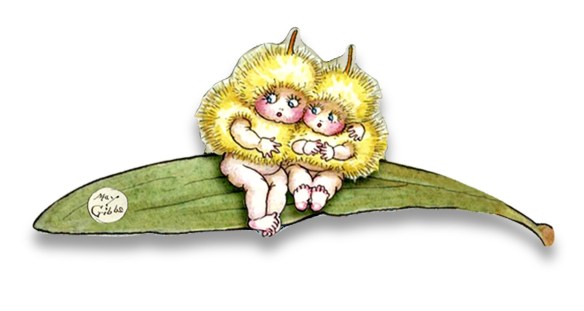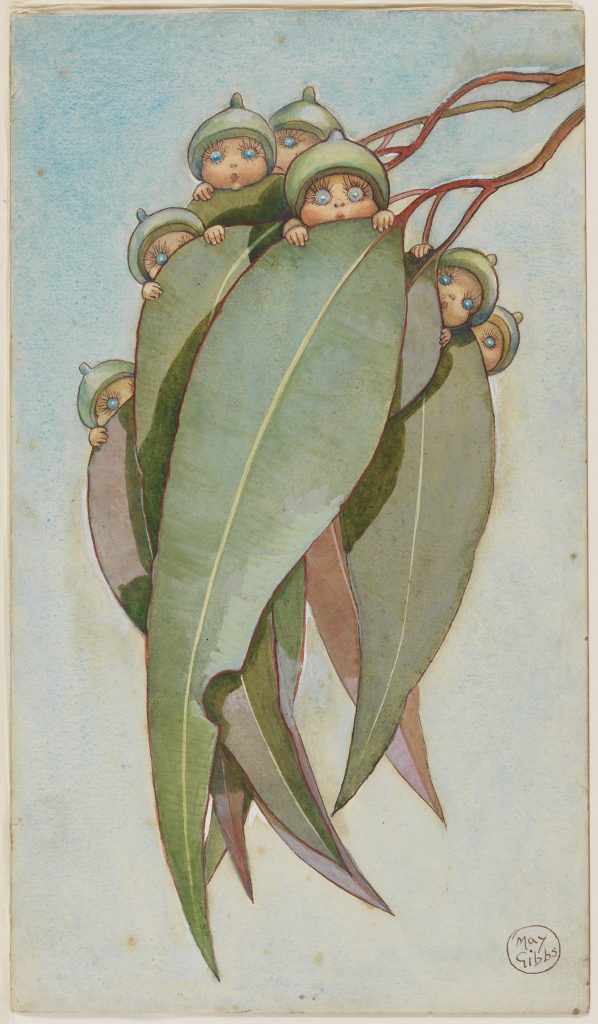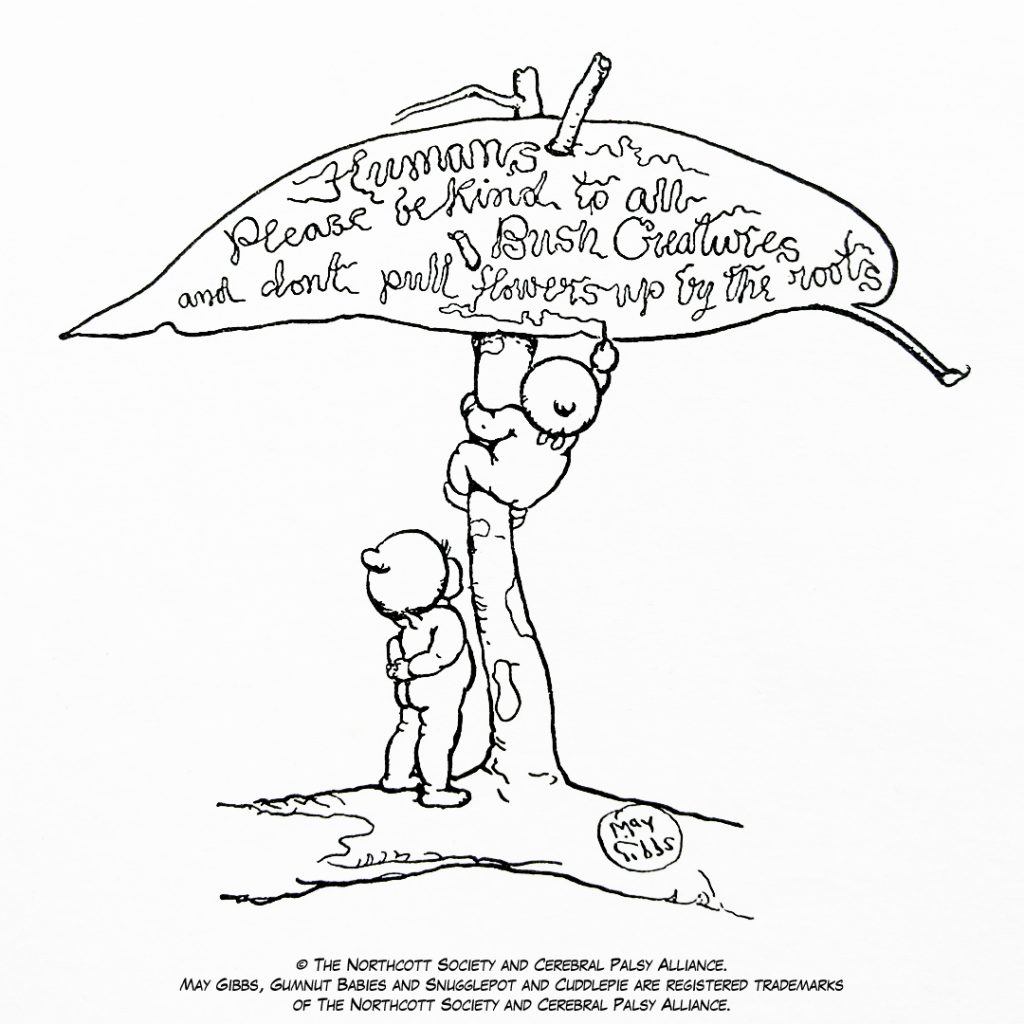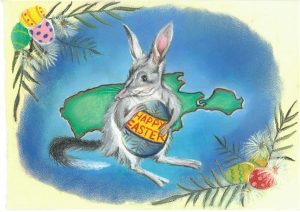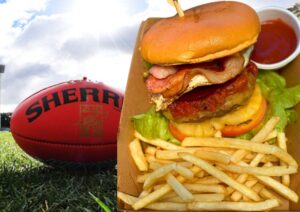No products in the cart.
Hello how are you? There is Hope for all of us!
11 August 2021
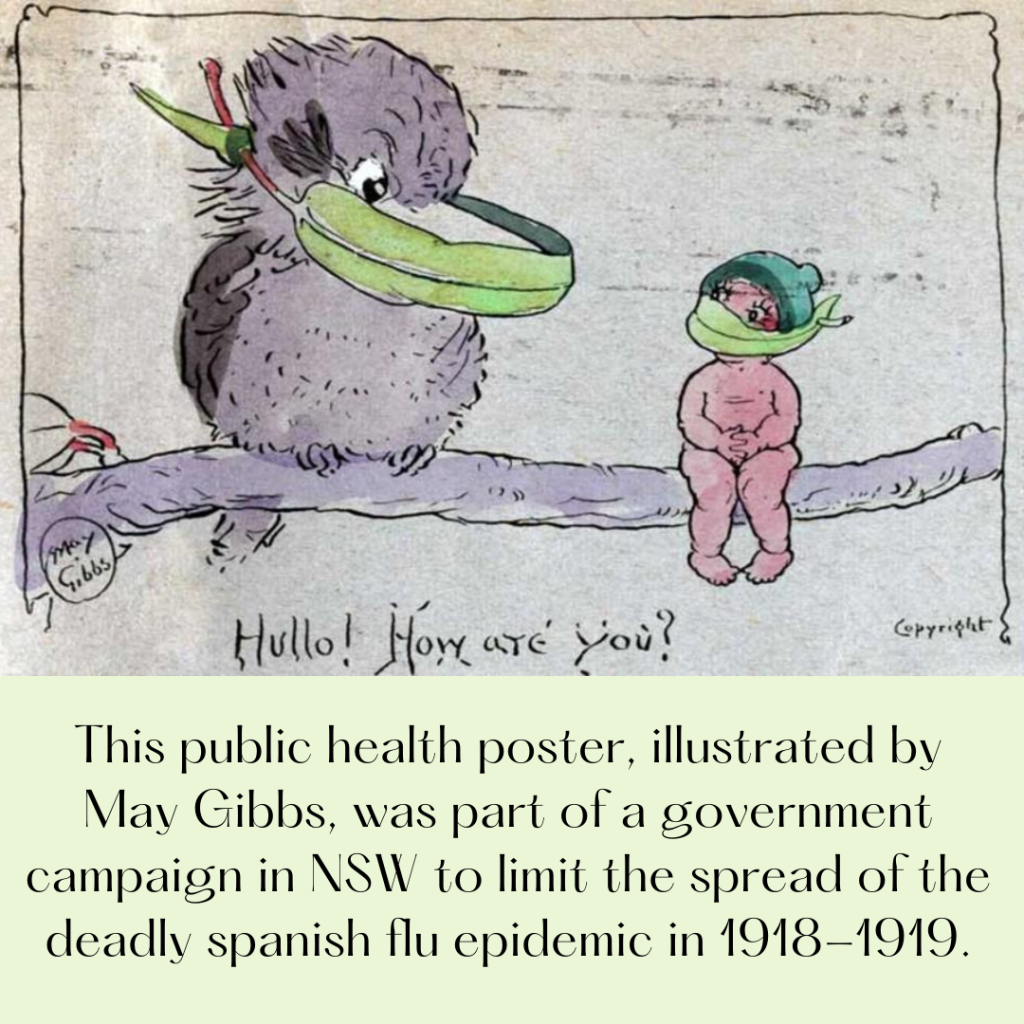
May Gibbs has always been an inspiration to me, I just love her quirky artwork, she was ahead of her time with her bush fantasy world! (1877 – 1969) She is one of Australia’s most treasured illustrators, artists and children’s authors, thats why we love her so much at Emu Ridge!
This image is so now, I love it and it was produced in 1919 amazing! This picture gives us all hope, that despite the uncertainty surrounding us, it wont last forever.
About this record
This is an excerpt from a public health poster about the Spanish influenza (flu) pandemic, drawn by children’s illustrator and author May Gibbs in 1919. The detail features a gumnut baby and a kookaburra sitting on a branch, with eucalyptus leaves wrapped around their mouths in the manner of surgical masks. Apart from the leaf, the gumnut baby wears only a gumnut on her head. The illustration is captioned ‘Hullo! How are you?’ The word ‘Copyright’ is at the bottom right and the illustrator’s signature, ‘May Gibbs’, is at the bottom left.
Educational value
- This public health poster was part of a government campaign in New South Wales to limit the spread of the deadly Spanish flu pandemic of 1918–19, in which about 12,000 Australians died, 6300 of them in New South Wales. Soldiers returning from World War I and infected people were quarantined, wearing masks in public places was made compulsory, schools were closed, many public activities were banned or restricted and pharmacy prices were regulated.
- This illustration by children’s illustrator and author May Gibbs (1877–1969) uses familiar characters from her children’s books to encourage readers, especially children, to wear masks to reduce the spread of the deadly infection. Gibbs was one of the most popular children’s writers of the time. Her characters, such as bush babies and banksia men, were inspired by the uniqueness of the Australian bush and appealed to adults as well as children.
- The Spanish flu was so called because the outbreak was first noticed in Spain, in 1918, and it killed 8 million in Spain alone. The pandemic spread across the world in three waves–beginning in 1918 and 1919 with the return of soldiers from World War I. Mainly affecting healthy young people aged 15–35 years, the flu killed between 20 and 50 million people worldwide, more than the total number killed in the war.
- Public health campaigns before the age of radio and television used the poster as an effective advertising medium. Government bodies made wide use of posters for various campaigns, including war service recruitment, public health and safety, and promotion of railway travel, but they were used most widely in public health campaigns. This poster was produced as a lithograph, as were most posters of the era.
- The illustration uses the popular icon created by May Gibbs, the ‘gumnut baby’, one of the bush babies series that made her famous. One of the first appearances of the gumnut babies was in an illustration to Ethel Turner’s story The Magic Button, published in 1913. In 1916 Gibbs published her first book, Gumnut Babies. Her famous book about the adventures of two brothers, Snugglepot and Cuddlepie, was first published in 1918.
- Gibbs used distinctly Australian motifs at a time when the Australian bush was an important symbol of national identity. An upsurge in Australian nationalism in the arts and literature began in the 1890s, with bush poets such as Henry Lawson and Banjo Paterson receiving wide acclaim for their uniquely Australian stories. The bush ethos was an important part of the early nationalism that followed Federation in 1901.
Acknowledgments
Image by May Gibbs. Reproduced with permission from joint copyright holders – The Northcott Society and the Spastic Centre.
www.naa.gov.au/learn/learning-resources/learning-resource-themes/health-and-welfare/epidemics-and-quarantine/may-gibbs-illustrations-public-health-poster
